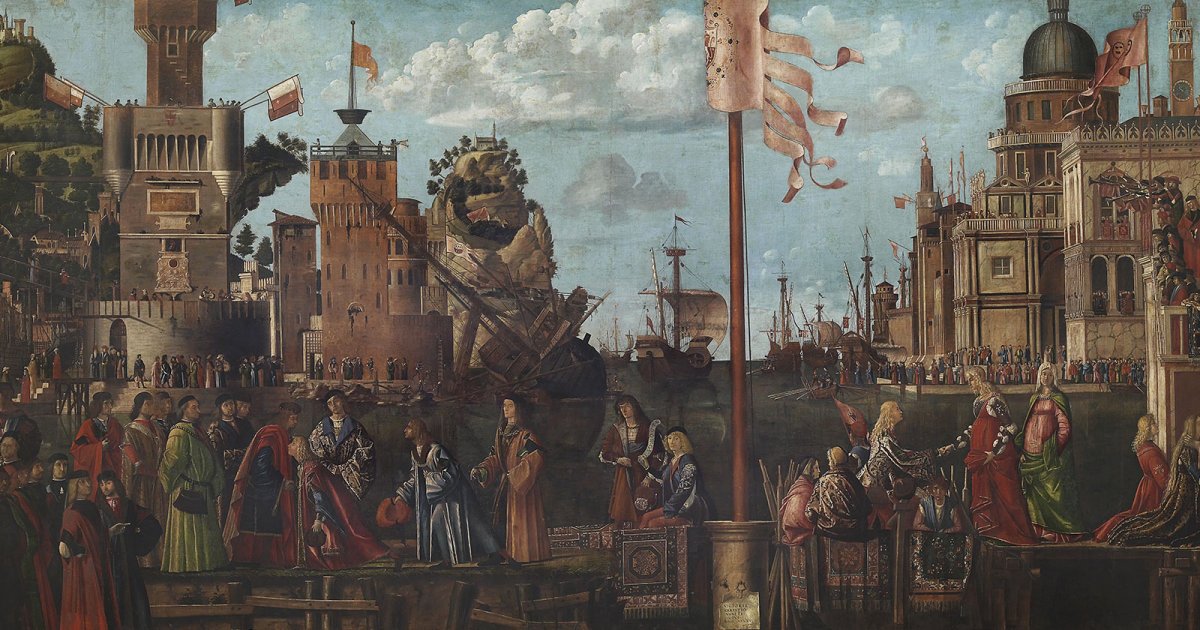ACCADEMIA GALLERY, Legend Of Saint Ursula - 1
 Language: English / USA
Language: English / USA
An unmissable landmark during your tour of the Accademia Gallery is the large room where you currently stand, which was specifically designed to display the entire cycle of the Legend of St. Ursula by Vittore Carpaccio. The paintings are from the late 1400s and were created to decorate a room of the small School dedicated to the saint: the now rather battered building can be found next to the Basilica of San Zanipolo.
An integral part of Carpaccio's painting cycle is the altar painting with the glory of St. Ursula, which is displayed on a separate wall here. You might find this canvas less successful and attractive than the narrative scenes, and you're not wrong: the composition is conventional, and some of the figures appear a bit forced, lacking credibility. You can still appreciate some of its unusual elements like the saint's strange pedestal formed by a bundle of palm trees and the little angels with their shower of flowers.
But let's move on to the real Legend of St. Ursula. As you'll see, Carpaccio tells the story while balancing reality and fantasy. Without worrying too much about the actual locations of the story (Brittany, Rome, the city of Cologne), he has us follow the story of two lovers, the beautiful Ursula and Prince that asks to marry her, in the scenario of a dream-like Venice with richly dressed characters and a cheerful alternation between luxurious interiors and vast panoramas of the city and countryside. Scene after scene, the sacred story becomes legend, and you get caught up in the magic of a sad and romantic fairy tale. I don't suggest following the cycle's chronology, because in that case you should start from the end: the painting of the martyrdom of Ursula was the first one that Carpaccio did! It's better to follow them painting by painting according to the narrative. I'll describe them one by one.
FUN FACT: Carpaccio probably never imagined that his name would become more famous for gastronomic reasons than for artistic reasons. In fact, it was in his honor that the owner of Harry's Bar in Venice invented a delicious dish of thin slices of raw beef dressed with oil and a sauce. He called it Carpaccio because its color reminded him of the red of the Venetian artist's paintings. Now you'll also think of the great painter if you order it in a restaurant!



